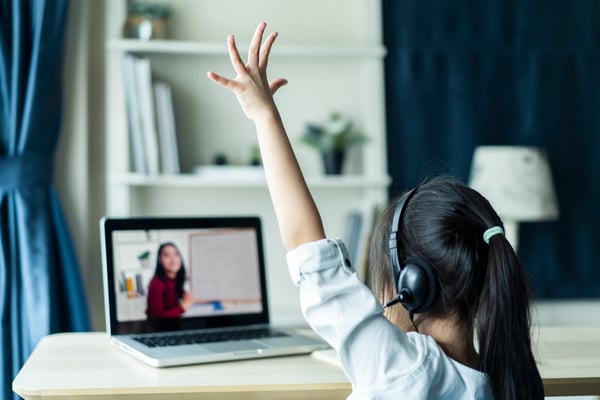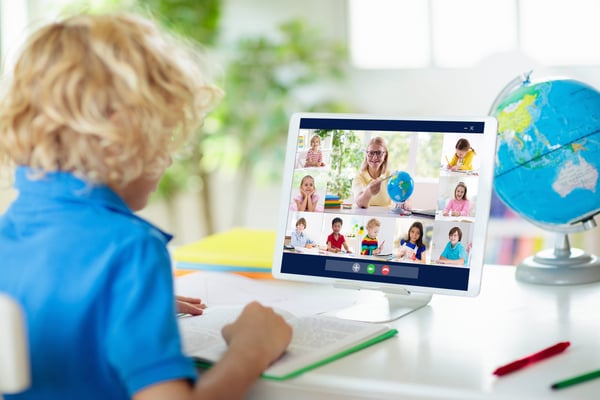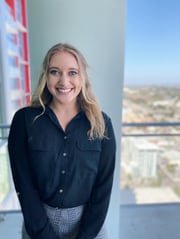Anaheim/OC Hotel & Lodging Association Taps Presidio for Management
As a leading public affairs and communications firm in Southern California, we at Presidio are thrilled to announce that the Anaheim/Orange County...

Before the COVID-19 pandemic, remote learning was seen as a last-resort option, but it has since become a vital investment to ensure students’ safety. With many students having to attend classes online, educators have raced to find platforms that are accessible and interactive enough to maximize retention at home.
While distance learning has provided a set of challenges such as lack of student engagement and limited resources, schools have realized that educational technology (EdTech) is important for student learning and that it allows educators to learn new ways to adapt to a rapidly evolving world.
In the spring, many politicians and education officials questioned the value and quality of online learning and criticized many of the schools offering online classes. Now, however, the tone has changed, and K-12 school systems and colleges that did not invest in online education are desperately rushing to do so. Here’s an overview of what we’ve learned over the past eight months.

Remote learning is not entirely new, but the scale of Distance Learning in 2020 is indeed unprecedented and brings up new challenges for educators and researchers.
Past research conducted to determine the effectiveness of remote learning mainly concerned how students prefer to learn and how they are affected by different learning environments. While such studies offer helpful insights, they don’t account for the current situation in which a majority of students are enrolled in Distance Learning due to safety concerns, rather than learning preference.
In terms of technologies that amplify classroom learning, some older technologies, including public television shows such as Sesame Street, Between the Lions, and Super WHY, have a robust research base behind them. But many of the newer apps and software programs currently being marketed to teachers, parents, and caregivers do not.
The types of apps and programs that schools use really depend on the age of their students. High schools and universities can rely on students to be more responsible and sufficient with Zoom calls, posted video lectures and online assignments, but younger students do not have the same ability to learn as well on their own, and so they require more intricate learning platforms.
Many schools have turned to Seesaw, a membership based application that allows teachers to post assignments, videos and resources for students. The app is now used in more than three-quarters of American schools, including big districts like Dallas and Los Angeles.
Other districts have turned to platforms such as Google Meet and Google Classroom. Educators have also been posting videos of lessons or establishing a back up platform for the class call in case of any unforeseen challenges. These video conferencing platforms help provide students with live instruction and interaction with their class to create a similar learning environment to what they’re used to. The synchronous video calls allow teachers to share material and go through live examples with their students instead of assigning readings for students to learn on their own, while the possibility of asynchronous access helps students who may not be able to access the live call.
Not all platforms, however, have been designed to teach students fundamental skills such as reading and writing. Unfortunately, there is very little research behind the effectiveness of learning to read and write remotely. This means that teachers are having to come up with creative solutions.
University of Michigan literacy professor Nell Duke uses Google Jamboard for interactive writing lessons. The instructor writes a letter while her students use the mouse to draw out words. When students draw out a letter, Duke then asks them what sound the letter makes on its own and in the word to teach association. This strategy emphasizes that educators try to reproduce visual and auditory aids on video conferencing platforms with students to help them learn the necessary associations.
In the early days of COVID, many schools were not prepared to move their curriculum fully online, but after a few months of trial and error along with a summer break, schools are off to a much stronger start to the 2020-2021 school year.
At Farragut High School in Knox County, Tennessee, teachers have adapted to using Logitech MeetUp video conference cameras to broadcast to students using multiple preset camera angles. This keeps students engaged and allows them to have free range of motion around the room while speaking. Compared to earlier online classes that were stationary, both teachers and students have found the free range movement and multiple camera angles provides a much more stimulating experience.
Yet for all the innovations and successes that have been achieved, many challenges remain. Even now, not all students have computers available for them to use for school or the reliable internet access that would allow them to participate fully. Many schools have provided devices for their students, but not all schools can meet the demand.
Another major challenge that both educators and students have had to overcome is tending to students with disabilities. For students that are visually impaired, Ally has launched an online audio-based learning platform. This software helps students with a braille component as well as audio lessons. These resources are important for students that will not benefit from a typical Zoom call or educational video, but there is more work to be done to ensure equitable and meaningful access to education.

Educators used to treat online educational resources and classes as optional outlets for students. However, now that we have had to conduct school online, it’s clear that remote learning may become a helpful, supplemental tool in the future. For instance, remote learning could provide an alternative to students that are staying home due to illness.
Even though the COVID-19 pandemic will one day be over and classes will resume to their normal, in-person format, the impact this pandemic has on education will last long into the future. Luckily, educators are now more familiar with alternate platforms and ways to accommodate students that need extra help in school.
It can be hard to sort through all the lessons from Distance Learning this year, but one thing is clear: the most important component in all aspects of remote education is transparency between educators and students to maximize what students can take away from the experience.
For additional online educational resources, you can visit OER Commons’ website.
Sarah Kacmarsky contributed to this post.
 Samantha Marquez
Samantha Marquez
Director of Public Agency Services
Samantha Marquez is a community relations and engagement specialist with over six years of experience in legislative affairs and targeted policy messaging on the local and state level. Before coming to Presidio, Samantha served as the District Director to the Majority Leader of the California State Assembly, where she served as a liaison between local public agencies and the state government. In the Assembly, Samantha was the Majority Leader’s principal aide for K-12 education and transportation.
 Sarah Kacmarsky
Sarah Kacmarsky
Intern
Sarah Kacmarsky is a 2020 graduate from Cal Poly Pomona with a B.S. in Public Relations. She is passionate about serving the community around her through outreach and creative campaigns.

As a leading public affairs and communications firm in Southern California, we at Presidio are thrilled to announce that the Anaheim/Orange County...

Presidio is excited to welcome the Arts Council for Long Beach (ACLB) as a new client for our government relations, strategic communications,...

Presidio, a leading public affairs firm, is pleased to announce that we have been retained by the California Association of Code Enforcement...